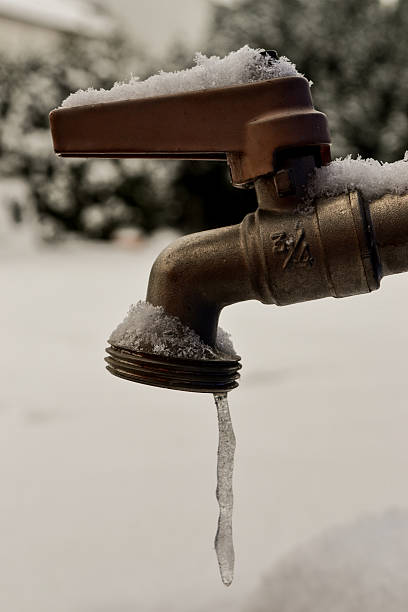Tips to Protect Pipes from Cold Weather: Expert Tips
Tips to Protect Pipes from Cold Weather: Expert Tips
Blog Article
How do you feel in relation to 6 Ways to Prevent Frozen Pipes?

Winter can ruin your pipes, specifically by freezing pipelines. Here's how to prevent it from taking place and what to do if it does.
Intro
As temperature levels decrease, the danger of frozen pipelines rises, potentially resulting in expensive repair work and water damages. Understanding how to stop icy pipes is essential for property owners in cool environments.
Avoidance Tips
Insulating prone pipes
Cover pipes in insulation sleeves or make use of warm tape to protect them from freezing temperature levels. Focus on pipelines in unheated or external areas of the home.
Heating methods
Maintain interior areas properly warmed, especially areas with plumbing. Open up closet doors to enable cozy air to flow around pipelines under sinks.
How to determine icy pipelines
Seek lowered water circulation from faucets, unusual odors or noises from pipes, and noticeable frost on subjected pipelines.
Long-Term Solutions
Architectural modifications
Think about rerouting pipes away from outside wall surfaces or unheated locations. Add extra insulation to attic rooms, basements, and crawl spaces.
Upgrading insulation
Buy top quality insulation for pipes, attics, and walls. Correct insulation assists maintain regular temperatures and lowers the danger of frozen pipelines.
Safeguarding Exterior Plumbing
Yard hose pipes and exterior faucets
Separate and drain pipes yard pipes prior to winter months. Mount frost-proof faucets or cover exterior faucets with shielded caps.
Recognizing Icy Pipelines
What causes pipes to ice up?
Pipes freeze when revealed to temperature levels listed below 32 ° F (0 ° C) for extended durations. As water inside the pipelines ices up, it increases, putting pressure on the pipe walls and possibly creating them to rupture.
Dangers and problems
Icy pipelines can lead to supply of water disruptions, residential property damages, and pricey repairs. Ruptured pipes can flood homes and cause comprehensive structural damages.
Indicators of Frozen Piping
Recognizing icy pipes early can prevent them from breaking.
What to Do If Your Pipelines Freeze
Immediate actions to take
If you suspect icy pipelines, maintain faucets open to relieve stress as the ice thaws. Utilize a hairdryer or towels soaked in warm water to thaw pipes gradually.
Final thought
Avoiding frozen pipes needs positive steps and fast reactions. By recognizing the causes, indications, and preventive measures, house owners can secure their pipes during cold weather.
6 Proven Ways to Prevent Frozen Pipes and Protect Your Home
Disconnect and Drain Garden Hoses
Before winter arrives, start by disconnecting your garden hoses and draining any remaining water. Close the shut-off valves that supply outdoor hose bibs and leave the outdoor faucet open to allow any residual water to drain. For extra protection, consider using faucet covers throughout the colder months. It’s also important to drain water from any sprinkler supply lines following the manufacturer’s directions.
Insulate Exposed Pipes
Insulating your pipes is an effective way to prevent freezing. Pipe insulation is readily available at home improvement stores and is relatively inexpensive. Pay close attention to pipes in unheated areas such as the attic, basement, crawl spaces, or garage. Apply foam insulation generously to create a buffer against the cold. You can also wrap your pipes in heat tape or thermostat-controlled heat cables for added warmth.
Seal Air Leaks
Inspect your home for any cracks or openings that could let in cold air. Seal any holes around the piping in interior or exterior walls, as well as the sill plates where your home rests on its foundation. Additionally, make sure to keep your garage door closed unless you’re entering or exiting. Leaving it open creates a significant air leak that can lead to frozen pipes.
Allow Warm Air Circulation
During cold snaps, it’s essential to allow warm air to circulate evenly throughout your home. Leave interior doors ajar to promote better airflow. Open kitchen and bathroom cabinets to help distribute heat consistently around the rooms. If you have small children or pets, be sure to remove any household chemicals or potentially harmful cleaners from open cabinets for safety.
Let Faucets Drip
A small trickle of water can make a big difference in preventing ice formation inside your pipes. When temperatures drop significantly, start a drip of water from all faucets served by exposed pipes. This continuous flow helps prevent the water from freezing. Additionally, running a few faucets slightly can relieve pressure inside the pipes, reducing the chances of a rupture if the water inside does freeze.
https://choateshvac.com/6-proven-ways-to-prevent-frozen-pipes-and-protect-your-home/

We were made aware of that editorial about How To Avoid Freezing Pipes through a buddy on another site. You should take a moment to share this blog posting if you enjoyed it. I cherish your readership.
Book A Free Estimate Report this page